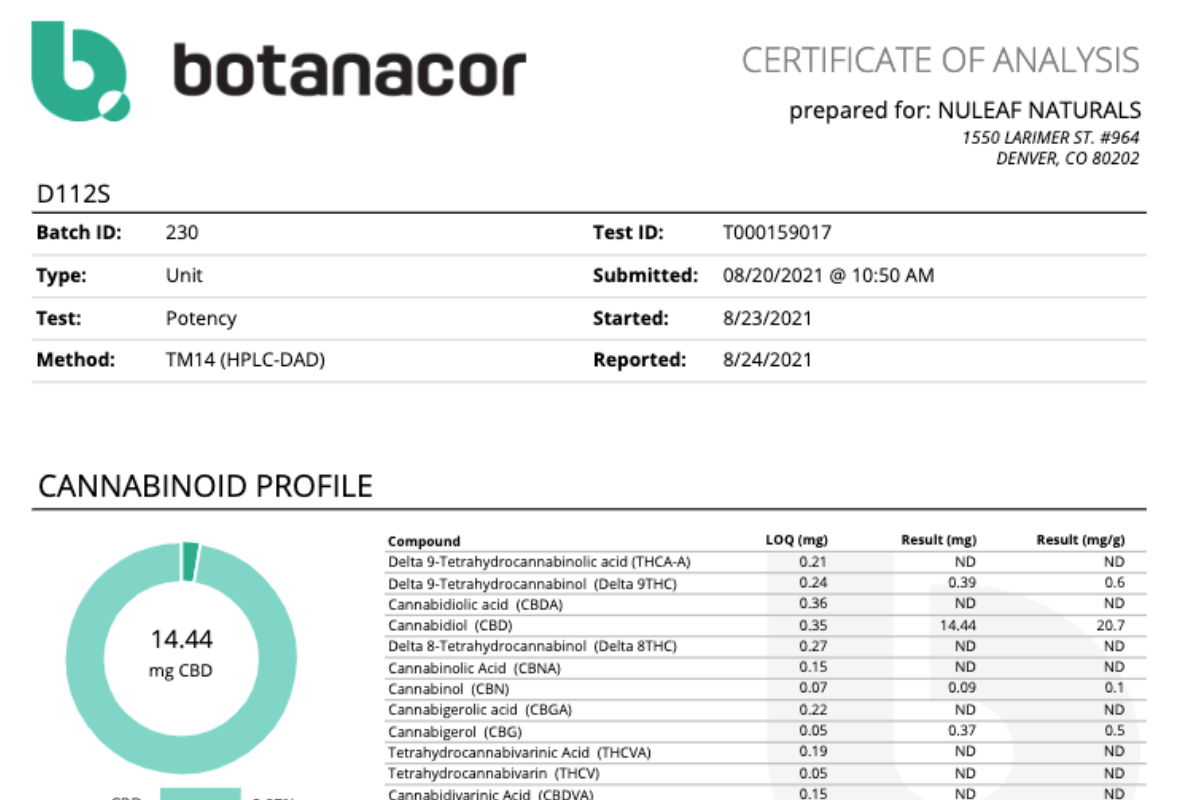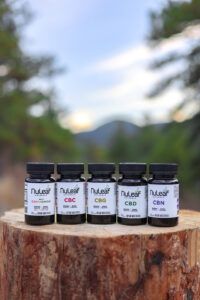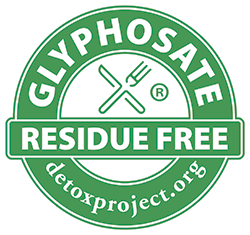How to Read a Certificate of Analysis (COA)

Revised April 2022
Wondering what’s in your hemp product? COAs, or Certificates of Analysis, are an essential part of self-regulating the hemp marketplace. A Certificate of Analysis (COA) is a lab report that features the chemical makeup of a product. Since CBD oil and other cannabinoid products are not currently regulated by any governing body, consumers may be in the dark about what they are buying. Without a COA that goes with the product, consumers would have no way of confirming what’s in their cannabinoid formulation.
Reputable hemp product manufacturers use COAs as verification of product safety, quality, and consistency. Keep scrolling to learn more about how to read a COA on your cannabinoid product label.
How to Read a CBD Certificate of Analysis Report
In the CBD industry, a COA will showcase the contents of a batch, which is sometimes referred to as a “lot” because of the unique lot number assigned to a shipment. This combined report will highlight the cannabinoids, terpenes, and other compounds, such as heavy metals or pesticides. This ensures a consumer is getting a safe, quality, and consistent product.
Keep reading to learn more about what to look for in a COA. And please note: These instructions may not be exact. Reports vary in formatting and layout by the testing company.
-
First Steps
When viewing a report, first identify the Batch or Lot ID (you will only see the prefix of this number on our reports) as well as who the report is prepared for, i.e., the company, such as NuLeaf Naturals.
Check the name of the company that performed the test. For maximum transparency, look for a manufacturer that utilizes an external testing lab. This further validates the results shown in the COA.
A signature is provided by the lab manager to verify the report’s accuracy and then signed by the company’s compliance lead once approved.

-
Cannabinoid Profile and Potency
The first page of a COA will feature the cannabinoid profile of the batch. This will include the cannabinoids found along with their concentration levels. This is arguably the most important part of the report because it showcases which cannabinoids are present, including THC content.
Here’s what else the profile will show:
- The Compound column showcases what cannabinoids were tested.
- LOQ, or Limit of Quantitation, is the smallest amount of cannabinoid necessary to accurately report the concentration.
- Result (mg/mL), or Potency by Volume, is the amount of cannabinoid broken down into milligrams per milliliter for reference. This is the proper metric to use for a liquid product like NuLeaf Naturals oil and softgels.
- Result (mg/g), or Potency by Weight, is the amount of cannabinoid broken down into milligrams per gram. This is the proper metric for solid products like NuLeaf Naturals full-spectrum CBD balm
Note: If you see an “ND” in a column, that means the amount present is less than the detection limit or none was found in the batch.
-
Heavy Metal and Residual Solvents Analysis
The next part of the report will highlight the heavy metal analysis of a product sample. This will present the chemical compound common name, the Dynamic Range used for detection parameters, and the concentration of metals discovered when tested.
Units are the measurement size. On most reports, you’ll find this to be micrograms per kilogram.
Method Detection Level, or MDL, is the lower limit of detection for the lab instruments used during the process.
-
Microbial Analysis
The Microbial Analysis shows the potential microbial contaminant tested, the method used for detection, and the limits of quantitation based on each microbial tested for.
-
Pesticide Analysis
The Pesticide Analysis follows, showing any pesticides that are tested for in the batch sample. This will highlight the pesticide’s name, the lower limit of detection, and units measured in parts per million based on each pesticide found.
-
Terpene Profile
Terpenes give cannabis products aromas and flavors. This can let consumers know what a product might taste or smell like and influences the overall experience. The Terpene Profile showcases the terpenes present in a sample, followed by the relative amount of each by weight present.
-
Additional Profiles and Analysis
Some COA reports will have additional profiles on and analysis of what might be in a CBD product. The report will briefly explain each profile or analysis and give you similar breakdowns to understand what’s in each sample.
If There’s No COA, Shop Elsewhere
When buying CBD oil and other hemp products, don’t forget that you’re buying something from an unregulated marketplace. This comes with its own set of risks. By ensuring the CBD companies you do business with provide COAs for every product they sell, you’re holding them accountable.
If something seems off about the COA a company is providing, you can always call the lab to verify the authenticity of the results. Don’t risk your health and safety without doing your due diligence on the company you’re preparing to buy from.
NuLeaf Naturals products are formulated in FDA and Colorado Department of Public Health and Environment (CDPHE)–registered facilities that are International Organization for Standardization (ISO) 7 and 8 and current Good Manufacturing Practices (cGMP)–certified.
We provide third-party lab-verified test results for every product we sell. We want to give consumers peace of mind when they buy our products and the knowledge behind COAs if they choose to buy CBD elsewhere. To shop our products, click here.
Do you have questions about our products, or are you not sure which one is right for you?
Our Expert Team is here to help via these convenient options:
Telephone: +1 (720) 372-4842
Email: [email protected]
Online chat: click the chat icon in the lower right corner of any page on nuleafnaturals.com
Don’t hesitate to get in touch with us Monday through Friday between 9am and 5pm MT.
